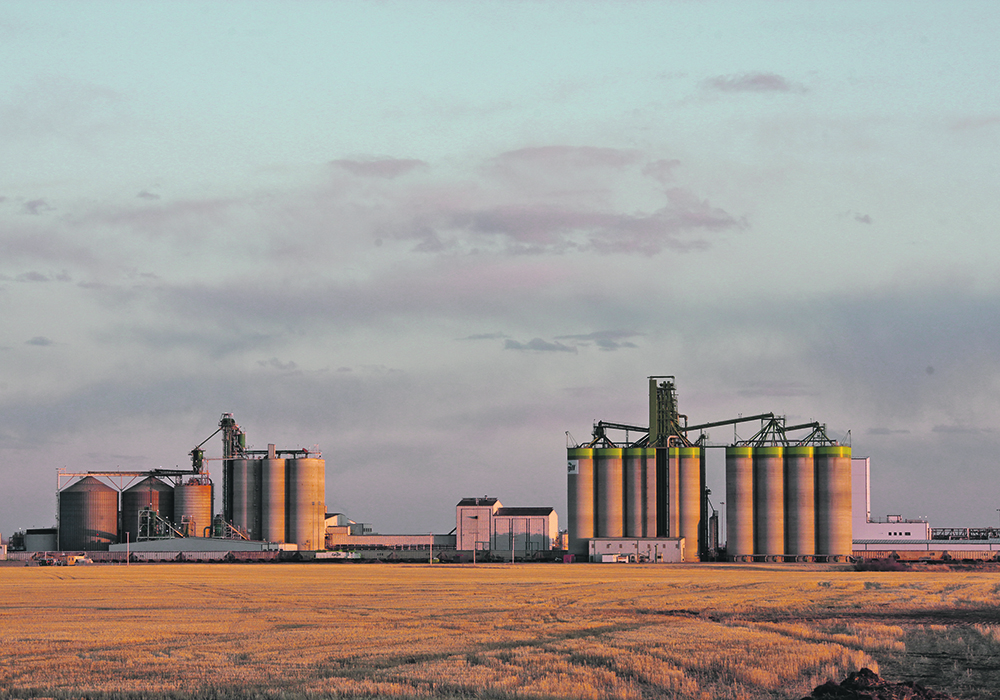Merits of new crusher focus debated

Some worry grain companies’ renewed emphasis on crushing will divert canola away from more lucrative export markets
Conventional wisdom suggests farmers benefit from domestic value-added projects, but for some farmers and analysts that is debatable.
A flurry of proposed new Saskatchewan canola crush projects were announced in the first half of 2021.
Richardson got the ball rolling in March with news that it is doubling the size of its plant in Yorkton.
That was followed by announcements by Cargill and Viterra that they were building brand new facilities in Regina.
Ceres Global Ag capped off the flurry with its declaration that it is constructing a plant in Northgate, Sask.
The four projects combined will add 5.7 million tonnes of crush capacity to Saskatchewan’s total.
Marlene Boersch, an analyst with Mercantile Consulting Venture, wonders if farmers will financially benefit from all this close-to-home value-added activity.
She said that is a complicated analysis, but one thing that concerns her is the price tag on these plants, which in the case of Viterra is rumoured to be $800 million.
“These are new builds and the building costs have escalated and I’m absolutely astonished as to the values they throw around to build crush plants,” said Boersch.
Her concern is that the new builds in Canada are far more expensive than crush plants in Europe and other jurisdictions and won’t be able to pay farmers as handsomely as plants in export markets.
Boersch also worries that the grain companies that own these facilities are both crushers and exporters.
In years like this one, when canola supplies could be tight, she believes they will cut back on exports to keep their own plants running.
“As a crusher, you’re going to protect your crush plant as opposed to exports,” she said.
Jean-Marc Ruest, Richardson’s senior vice-president of corporate affairs and general counsel, said there is only one reason companies are spending hundreds of millions of dollars on new crush plants.
“That signals a big demand for the product,” he said.
Ruest said he is no economist but he can’t fathom how increased demand for a commodity could result in reduced farmgate prices.
“In fact, what is likely going to happen or what we’re going to see is increased competition to be able to source that product,” he said.
Dale Leftwich, policy manager for the Saskatchewan Canola Development Commission, said farmers have raised some of the same concerns as Boersch about grain companies potentially diverting canola away from lucrative export markets to fuel their own plants.
“Canola growers are concerned that there might be a diversion from a more profitable market to a less profitable market,” he said.
However, he acknowledged that the flipside is that farmers become too reliant on fickle export markets.
He said all the new builds are part of an industry-wide strategic response to China curtailing canola imports from Canada due to a political spat.
Having a robust domestic processing sector will in many ways be a comfort for farmers.
It could also prove financially rewarding for some Saskatchewan growers who face a significant freight disadvantage compared to growers in Alberta in getting their product to market.
Leftwich said there is a reason all the new crush plants are being built in Saskatchewan, particularly the southern and eastern portions of the province, because getting product to export markets from those areas is costly.
“You don’t have a big push to put crushing facilities in Alberta because they have a ready market in Japan and other places,” he said.
The freight bill is as bad as it gets along the Manitoba-Saskatchewan border, which is why a place like Yorkton can support two crush plants, one of which is undergoing a major expansion.
Of course, another reason for the location of the plants is the proximity to the U.S. marketplace, which is a big buyer of Canadian canola oil and meal.
MarketsFarm analyst Bruce Burnett said there is not much difference between what a farmer gets paid at a crush plant versus an elevator.
“There are some subtle differences in pricing but at the end of the day they’re very comparable with each other,” he said.
“Sometimes the crusher has the better bid. Sometimes the elevator has the better bid.”
However, he noted that crusher demand tends to be more consistent and stable than export demand, and crushing plants are more apt to buy throughout the crop year rather than at specific times.
“Once you build a crush plant you’re essentially going to run it at capacity or as close to capacity as you can,” he said.
He also agreed that export demand can be fickle and disappear in a heartbeat because of tariff and non-tariff barriers, political tensions and disruptions in rail and ocean freight services.
Source: producer.com

